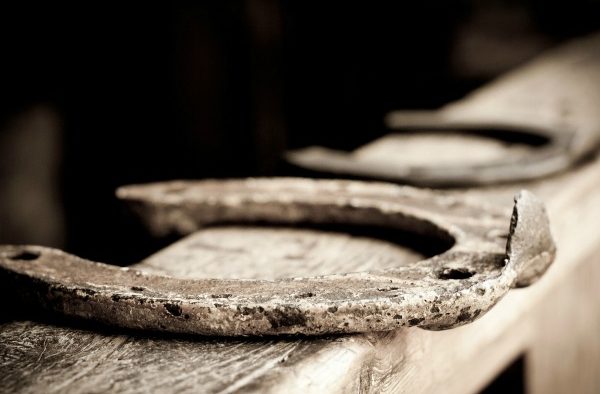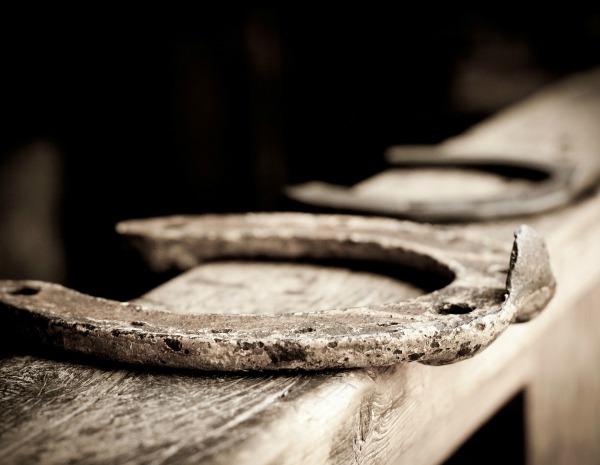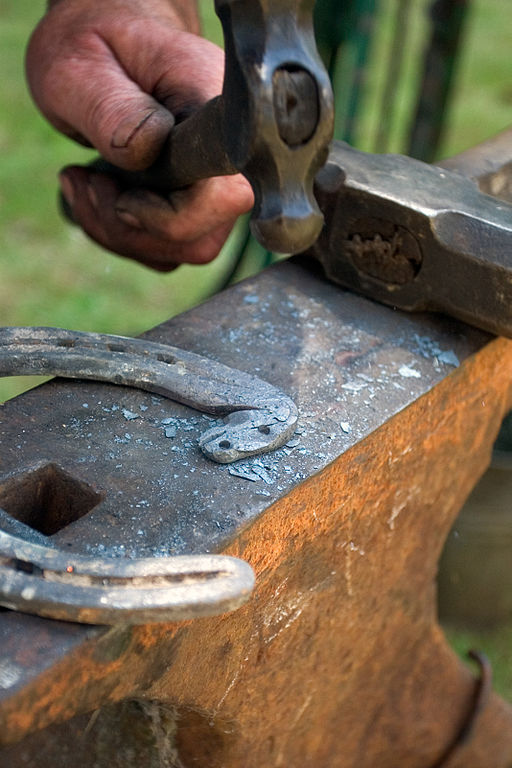How to Choose A Farrier
Share

 The most important things you can do for your horse includes feeding a balanced diet and providing proper care for their feet. Choosing a farrier is as important, or more so, than choosing a veterinarian or boarding facility.
The most important things you can do for your horse includes feeding a balanced diet and providing proper care for their feet. Choosing a farrier is as important, or more so, than choosing a veterinarian or boarding facility.
Finding the right farrier will take time, but avoiding lifelong injury or crippling your horse due to improper shoeing will save you thousands of dollars, and a lot of heartache, in the long run.
Here are some tips on how to find a farrier (horseshoer or blacksmith) and why it’s so important to select a great person to work with your horse.
[heading style=”modern-1-light” color=”#3a5472″ style_color=”#06192e” align=”left”]Personal Recommendations[/heading]
When seeking out your first farrier, you may want to rely on personal recommendations. Ask around the barn, or discuss with friends who have experience with horses in the area. This could also save you a lot of time and money as you can schedule your farrier to visit on the same day he’s shoeing other horses in the barn. You could also ask your veterinarian, trainer, or breeder for their recommendations.
[heading style=”modern-1-light” color=”#3a5472″ style_color=”#06192e” align=”left”]Consult a National Organization[/heading]
Consult the American Farrier’s Association. This resource lists certified farriers by name, state and country.
- Online: Farriers.com – Visit Farriers.com for a national directory of farriers in your area.
- Publications: Look at local and regional publications for a list of farriers who service your area.
[heading style=”modern-1-light” color=”#3a5472″ style_color=”#06192e” align=”left”]Certification and Training[/heading]
Blacksmithing is an art and farriers undergo a great deal of training and formal education. Those who choose a more practical route will apprentice under a master blacksmith for many years before embarking on a business of their own. Farriers must be familiar with many things beyond the feet – that includes equine anatomy and locomotion, as well as the many medical conditions that can impact a horses’ hooves.
Certified farriers have attended school, either a trade school or an equine science program that is committed to the craft. Since there are no laws requiring farriers to be certified or to have earned a degree, it’s imperative that you understand your farrier has the proper skills and education necessary to care for your horse.
The American Farrier’s Association offers a list of schools that focus on farrier education, and offers four levels of certification:
- Certified Farrier – one year of horseshoeing experience
- Certified Tradesman Farrier – two years of experience with forging and fitting skills
- Certified Journeyman Farrier (CJF) – two years of experience and specialized skills—the highest certification given in the United States
- Specialty Endorsements – for those with a CJF, continuing education with specialties in hoof care and knowledge of specific breeds
[heading style=”modern-1-light” color=”#3a5472″ style_color=”#06192e” align=”left”]Meeting and Interviewing Farriers[/heading]
Once you have selected a few farriers, you should ask them some questions. At a loss for words? Here’s a good place to start:
[list icon=”icon: question-circle” icon_color=”#3a5472″]- Where did you study or apprentice?
- How long have you been working as a farrier?
- Are you a member of a national farrier organization?
- Do you specialize in a specific area? (I.e., unmanageable horses or chronic conditions)
- How would you manage an uncooperative horse?
- Can you provide any references?
[heading style=”modern-1-light” color=”#3a5472″ style_color=”#06192e” align=”left”]Things to Be Watchful For on First Visit[/heading]
When you meet your farrier for the first time, these are some things you should pay close attention to:
[list icon=”icon: check” icon_color=”#3a5472″]- Do they return calls promptly?
- Did they call to verify appointment the night before? (Not necessary, but a nice professional gesture)
- Did (s)he arrive on time?
- Did he show respect driving onto property (slow speed, yielding properly, etc.)
- Did he have all of the equipment needed?
- Does he understand the basic anatomy of the horse? (I.e., he didn’t make the horse stand uncomfortably or require them to hold their feet up for long periods of time, etc.)
- Was he gentle with the horse? (Didn’t threaten or hit horse,
[heading style=”modern-1-light” color=”#3a5472″ style_color=”#06192e” align=”left”]Tipping Your Farrier[/heading]
Choosing a farrier can be a stressful task, but once you find one you and your horse like, it’s important to keep a good farrier very happy, as they can be tough to find. Some people choose to tip their farriers each visit, others prefer to do it once a year.
[box style=”soft” title=”Tipping Your Farrier” title_color=”#040404″ box_color=”#3a5472″ radius=”9″ class=”template-style”]TheHorse.com did a poll on the topic of tipping and of 1,727 people polled, 71% did not tip their farrier.[/box]










